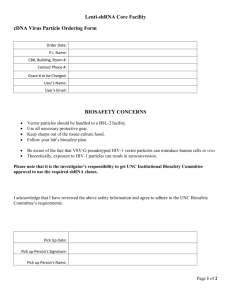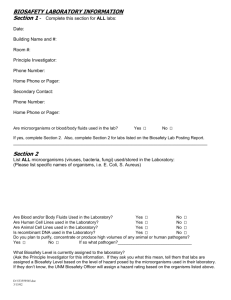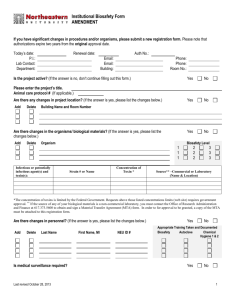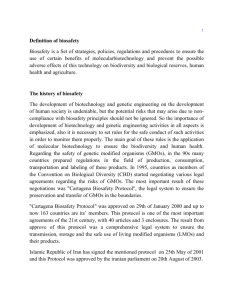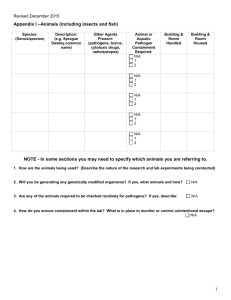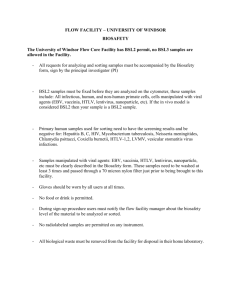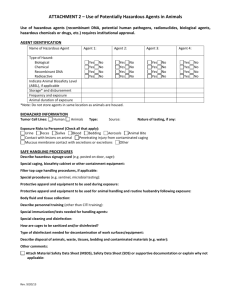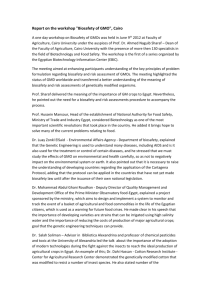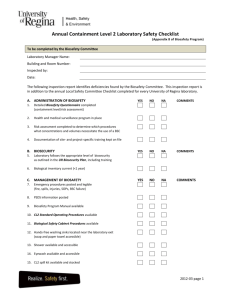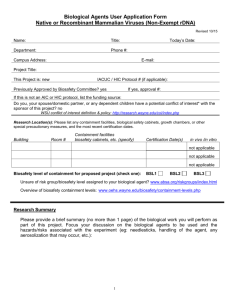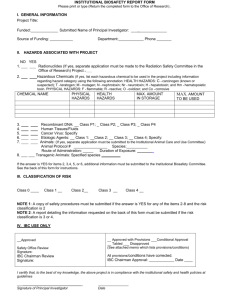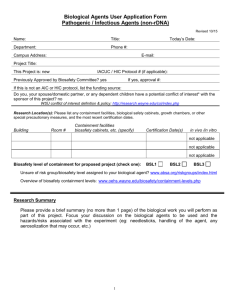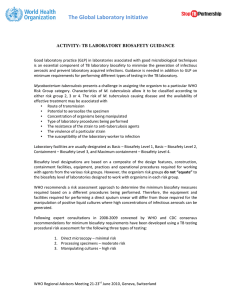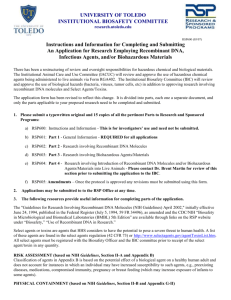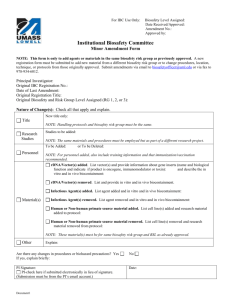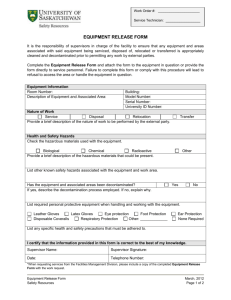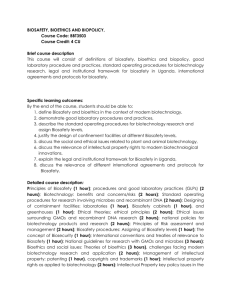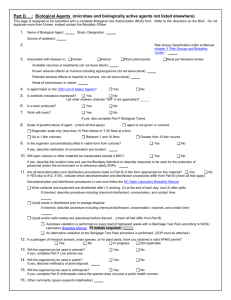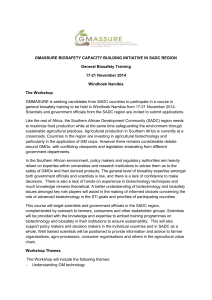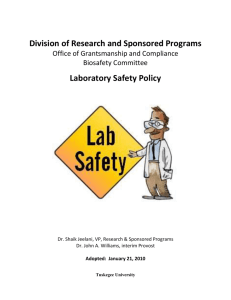BIO226: Laboratory Safety BIO226: Laboratory Safety Chemicals in
advertisement
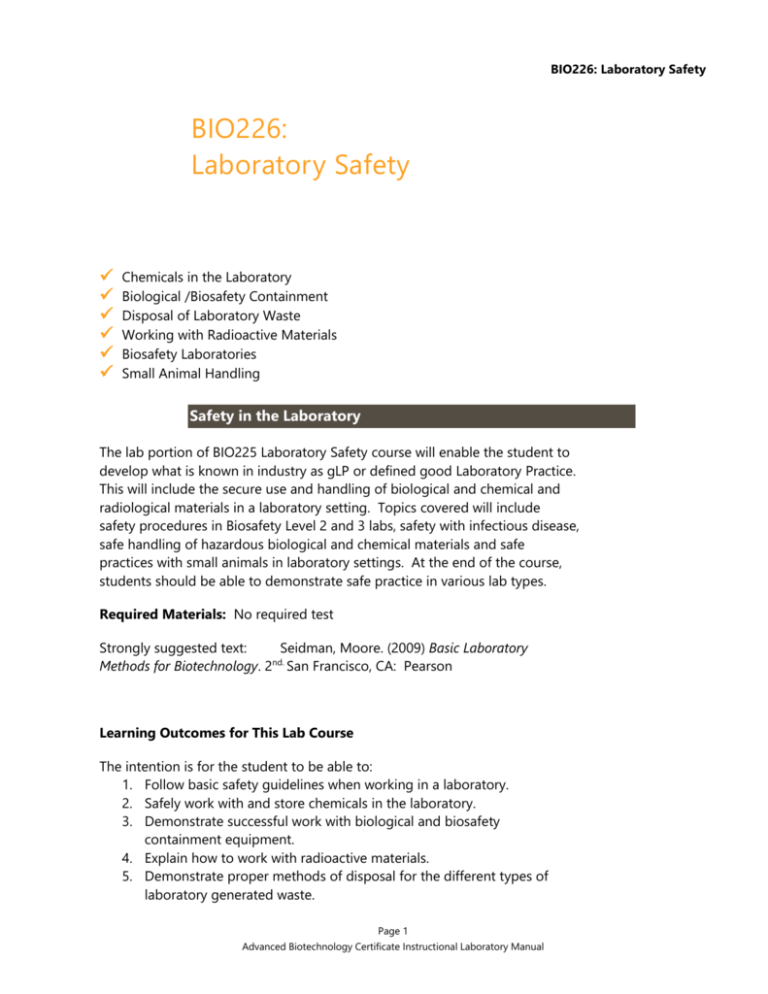
BIO226: Laboratory Safety BIO226: Laboratory Safety Chemicals in the Laboratory Biological /Biosafety Containment Disposal of Laboratory Waste Working with Radioactive Materials Biosafety Laboratories Small Animal Handling Safety in the Laboratory The lab portion of BIO225 Laboratory Safety course will enable the student to develop what is known in industry as gLP or defined good Laboratory Practice. This will include the secure use and handling of biological and chemical and radiological materials in a laboratory setting. Topics covered will include safety procedures in Biosafety Level 2 and 3 labs, safety with infectious disease, safe handling of hazardous biological and chemical materials and safe practices with small animals in laboratory settings. At the end of the course, students should be able to demonstrate safe practice in various lab types. Required Materials: No required test Strongly suggested text: Seidman, Moore. (2009) Basic Laboratory Methods for Biotechnology. 2nd. San Francisco, CA: Pearson Learning Outcomes for This Lab Course The intention is for the student to be able to: 1. Follow basic safety guidelines when working in a laboratory. 2. Safely work with and store chemicals in the laboratory. 3. Demonstrate successful work with biological and biosafety containment equipment. 4. Explain how to work with radioactive materials. 5. Demonstrate proper methods of disposal for the different types of laboratory generated waste. Page 1 Advanced Biotechnology Certificate Instructional Laboratory Manual 6. Perform appropriately within the different Biosafety level labs . 7. Demonstrate understanding of the requirements of receiving and shipping of samples safely. 8. Demonstrate proper handling of small animals in the laboratory for research purposes. Course Competencies (Skills) Actions that are essential to achieve the learning outcomes: 1. Practice defined gLP during laboratory sessions 2. Reduce and defuse potential hazards in the laboratory in a manner consistent with the appropriate safety level 3. Classify, using a variety of sources, the chemical properties of the chemicals found in a lab. 4. Properly store and label different classes of chemicals, including categorizing and using correct containment areas. 5. Use defined Personal Protective Equipment consistent with the mode of entry of bacteria, virus, mold and fungi. 6. Exhibit a working knowledge of proper procedures when working with biological, chemical and radiological materials. 7. Design procedures for minimizing and disposing of lab generated wastes. 8. Explain and demonstrate cleanup of specific types of spills (acids, caustics agents, volatile chemicals) in the lab 9. Choose the correct type of Biological Safety Cabinet (according to function of each) for specific laboratory procedures. 10. Successfully handle and inject small laboratory animals for various research situations. Page 2 Advanced Biotechnology Certificate Satellite Laboratory Manual
